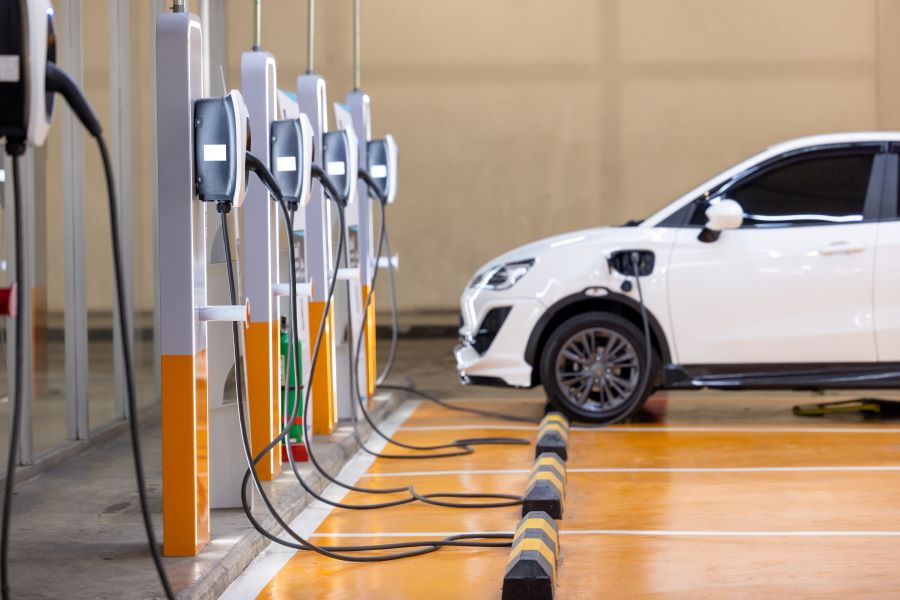Vehicle-to-Grid Technology: Powering the Future
The dawn of a new era in automotive technology is upon us, one where our cars not only transport us but also serve as mobile power stations. Vehicle-to-Grid (V2G) technology is revolutionizing the relationship between our vehicles and the electrical grid, promising a future where cars become active participants in energy management. This groundbreaking concept is set to transform how we think about transportation, energy storage, and grid stability.

Historical Context and Technological Evolution
The concept of V2G technology isn’t entirely new. It was first proposed in the late 1990s by Dr. Willett Kempton and Dr. Steven Letendre, who envisioned electric vehicles as potential distributed storage devices for the grid. However, it’s only in recent years that advancements in battery technology, smart grid systems, and vehicle electronics have made V2G a viable reality.
Early V2G experiments were limited by battery degradation concerns and the lack of widespread electric vehicle adoption. As battery technology improved and electric vehicles became more common, researchers and automakers began to seriously explore the potential of V2G. The turning point came with the development of more efficient power inverters and sophisticated energy management systems, which allowed for seamless integration between vehicles and the grid.
The Technical Intricacies of V2G Systems
V2G systems rely on a complex interplay of hardware and software components. At the heart of the system is a bidirectional charger, capable of converting AC power from the grid to DC power for the vehicle’s battery and vice versa. This charger is coupled with a smart meter that tracks energy flow in both directions.
The vehicle’s onboard computer plays a crucial role, constantly monitoring the battery’s state of charge and communicating with the grid operator’s systems. This communication is facilitated by advanced protocols that ensure secure and efficient data exchange. The grid operator, in turn, uses sophisticated algorithms to balance energy demand and supply, determining when to draw power from connected vehicles and when to charge them.
Grid Stabilization and Load Balancing
One of the most promising applications of V2G technology is its potential to stabilize the electrical grid. As renewable energy sources like wind and solar become more prevalent, grid operators face the challenge of managing fluctuating power supplies. V2G-enabled vehicles can act as a massive distributed battery network, absorbing excess energy during peak production times and feeding it back during high demand periods.
This load-balancing capability is particularly valuable in managing the infamous duck curve – the mismatch between peak solar energy production and peak energy demand. By strategically charging and discharging electric vehicles throughout the day, grid operators can smooth out these demand fluctuations, reducing the need for expensive peaker plants and improving overall grid efficiency.
Economic Implications for Vehicle Owners
V2G technology presents an intriguing economic proposition for electric vehicle owners. By participating in V2G programs, owners can potentially earn money by selling electricity back to the grid during peak demand periods. This concept of cars as mobile power plants could significantly offset the cost of vehicle ownership.
However, the economic viability of V2G depends on several factors, including electricity pricing structures, battery degradation rates, and regulatory frameworks. As the technology matures and more utilities adopt V2G-friendly policies, we can expect to see more sophisticated pricing models that incentivize vehicle owners to participate in grid stabilization efforts.
Challenges and Future Developments
Despite its promise, V2G technology faces several challenges. Battery degradation remains a concern, although recent studies suggest that smart V2G algorithms can actually extend battery life by optimizing charging cycles. There’s also the need for standardization across different vehicle manufacturers and grid operators to ensure seamless integration.
Looking ahead, the future of V2G technology is bright. Researchers are exploring ways to integrate V2G systems with smart home technology, creating holistic energy management solutions. There’s also growing interest in using V2G-enabled vehicles for emergency power supply during outages, potentially transforming our approach to disaster preparedness.
As we stand on the cusp of this automotive revolution, it’s clear that V2G technology has the potential to redefine our relationship with our vehicles and the energy grid. By turning our cars into active participants in the energy ecosystem, we’re not just driving towards a destination – we’re driving towards a more sustainable and resilient future.





